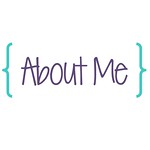One thing I have noticed about my third graders is that they do not self-monitor. They will say a word and, even if it does not makes sense, continue reading. Then, unsurprisingly, when they get to the end of the story or article, they have no idea what it was about. As a result, I have been trying to get my students to make a conscious effort to self-monitor more while reading.
We began with an anchor chart. We discussed how I will not always be there when they are reading, so they need to learn how to "fix-up" their reading on their own. We talked about how self-monitoring might involve stopping to reflect after a sentence, paragraph, or page to make sure they understood what they just read. They might be confused on a word, or confused by the information in the passage.
For the first book, I modeled how to use a t-chart to self-monitor. I recorded the page(s) number and then wrote a brief 1-2 sentence summary of what I read, as well as any questions I had. After we went over my example, we went back into the text and answered the questions I had "gotten stuck on" while reading. With the next book, we completed the t-chart in students' reader's notebooks together. We went back and answered the questions at the end.
For the final text, I selected an article. With this text, students created the t-charts independently in their reader's notebooks. I have noticed that students are making a much more conscious effort to problem-solve on their own, instead of waiting for help. This is definitely something that we will continue to practice throughout the year. I think it is important to remember that while this seems like such a natural skill, for struggling readers, it often does not come naturally.
How do you help your students self-monitor their reading?







My students don't have as much trouble with monitoring reading as they do with spelling. It seems like every.single.word is "How do you spell cat?" "How do you spell is?" Oh my goodness! (Not those words...harder words lol.) They can read the words but they have such a hard time putting them on paper! So I know how you feel!
ReplyDelete-Maria
I love the anchor chart and the journal entries. There are no excuses now! The students can refer to the chart or look back in their journal as a reference. It is so difficult to teach students to know what they don't know!
ReplyDeleteI love this idea, Amy. Two classes of my 5th graders self-monitor well, but this is a perfect mini-less for my first group of kiddos. I really like the focus on sentence, paragraph, and page. So many of my kids might spend 15-20 minutes reading, but when they try to explain what happened they look at me with puppy-dog ideas. Thanks for sharing!
ReplyDeleteCatherine
The Brown-Bag Teacher